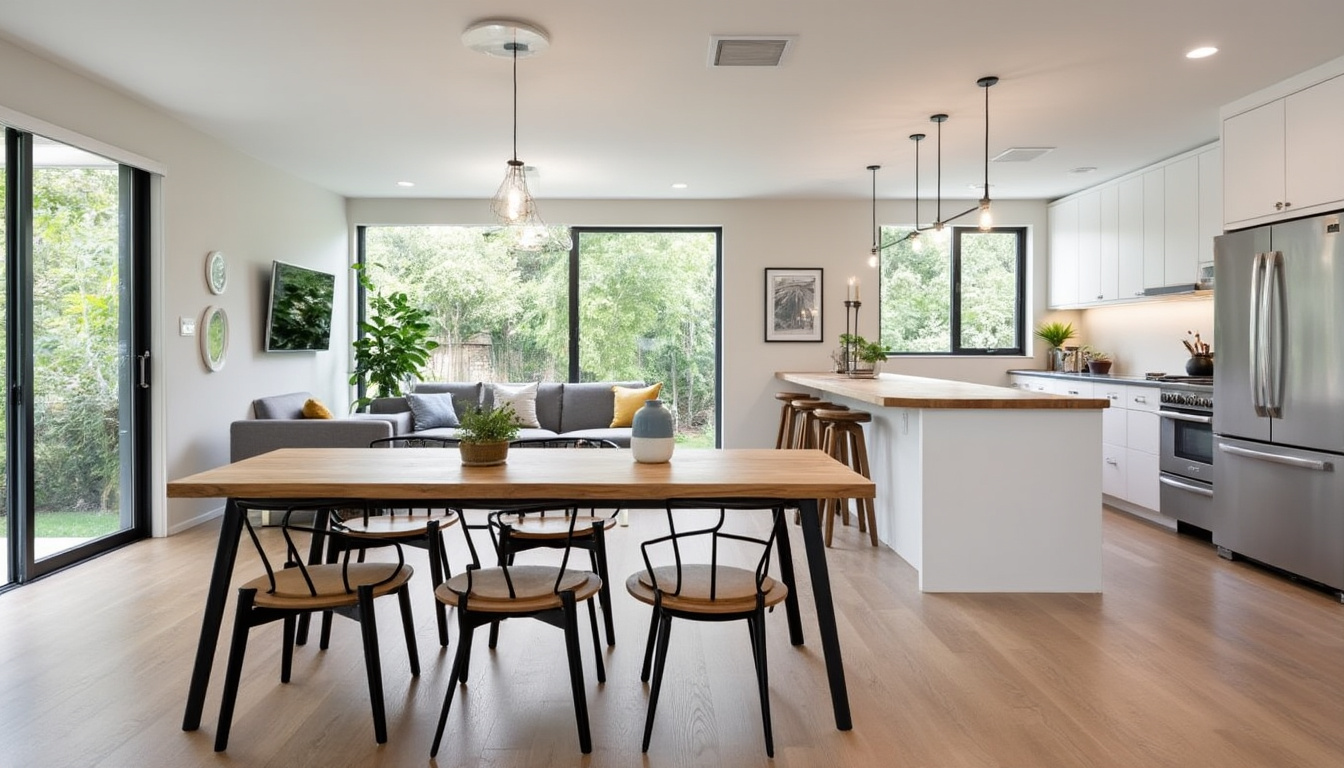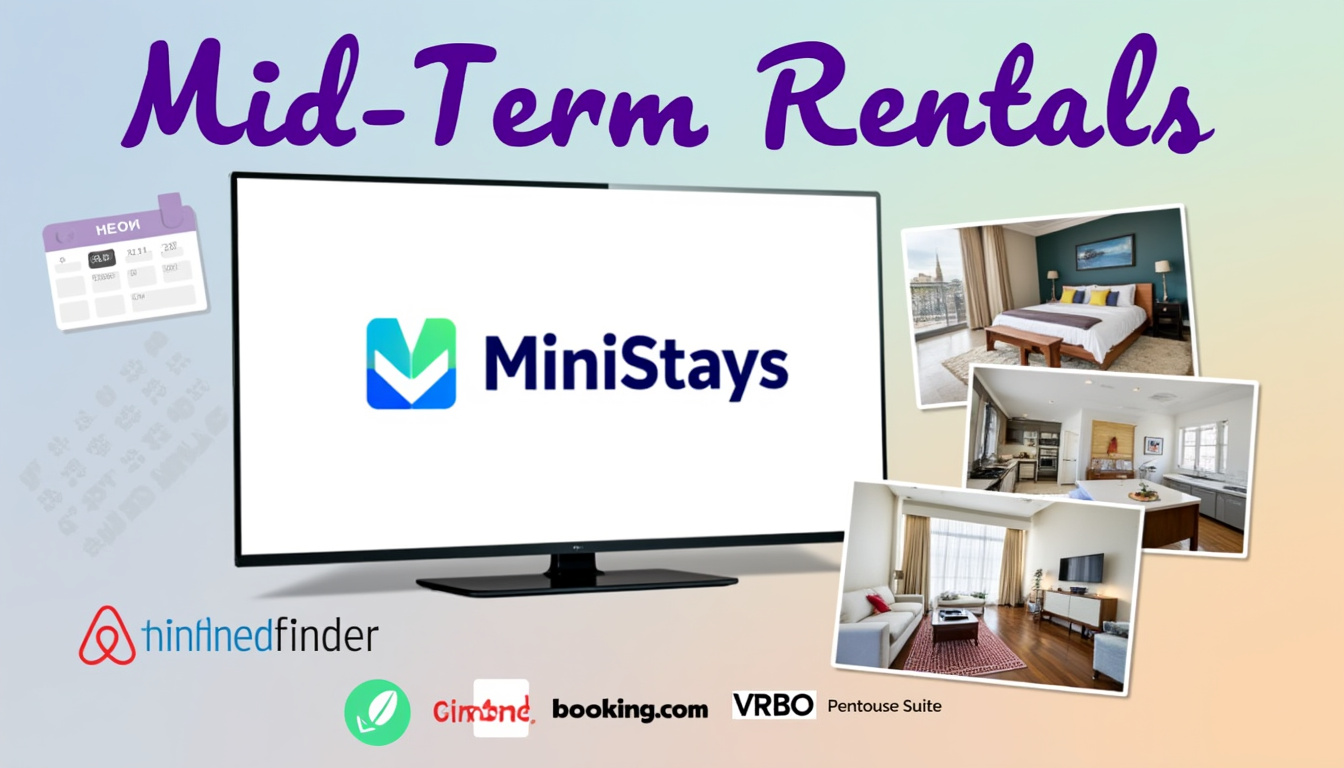The rental market is undergoing a significant transformation, as more people are seeking alternatives to short-term options like Airbnb. One of the most prominent movements is the rise of mid-term rentals, offering a solution for those looking for furnished accommodations for a month or more. These rentals are becoming increasingly popular in various cities, including the Twin Cities. Exploring this trend reveals shifting demands from travelers, changes in regulations, and emerging strategies for property owners. The idea of mid-term rentals accommodates a diverse range of guests, including business travelers, digital nomads, and families in transition, catering to the evolving needs of the rental market. Stay tuned as we dive into the details of this exciting trend.
The Rise of Mid-Term Rentals
Mid-term rentals are redefining how individuals seek furnished accommodations. Unlike traditional short-term options, which typically cater to tourists or vacationers, these rentals target individuals in transition—those needing a temporary living space for extended periods. This shift reflects the changing landscape of the rental market, driven by various factors such as employment trends, lifestyle changes, and global events.

Understanding the Market Shift
As people increasingly embrace flexible work arrangements, the demand for mid-term rentals has surged. Many individuals now work from home or travel for work, preferring a furnished rental that offers more than just a place to sleep. The Covid-19 pandemic acted as a catalyst for this trend, as remote work became commonplace, leading to a notable increase in stays of 28 days or more. Platforms like Airbnb have reported a substantial rise in this category, with bookings skyrocketing to 90% compared to pre-pandemic levels.
Mid-term rentals also allow property owners and managers to maximize their investments. Business owners and real estate investors have discovered that they can generate significantly higher returns by offering mid-term accommodations than they would through short-term rentals. With less turnover, less wear and tear, and stable income provided by longer stays, many landlords are shifting their strategies towards mid-term stays.
Demographics of Mid-Term Rental Guests
A diverse range of guests seeks furnished rentals today, further influencing the rise of mid-term rentals. Corporate travelers frequently need accommodations for weeks to months while they are on assignments. For instance, healthcare professionals, such as traveling nurses, who require temporary housing while fulfilling work obligations, are significant consumers of mid-term rentals.
Notably, the Twin Cities market has experienced a surge in demand for mid-term rentals. Investors like Jon Wolf, who launched the MiniStays platform, are responding to local needs. This development is emblematic of the national trend in mid-term rentals—pioneering a service that fills gaps created by traditional short-term options while enhancing guest experiences. Families in transitional phases, such as relocation or home renovations, also seek these rentals to ease stress during uncertain times.
Advantages of Mid-Term Rentals
The benefits of opting for mid-term rentals are numerous and appealing to both guests and property owners. For travelers, the flexibility, comfort, and affordability of these accommodations are increasingly attractive. For property owners, mid-term rentals often represent a sustainable and profitable business model.

Affordability and Comfort
Staying in a mid-term rental is typically more cost-effective than booking multiple short-term rentals over an extended period. By securing a monthly rental, guests can often negotiate better rates and avoid the high costs associated with short stays. In contrast to hotels that charge per night, mid-term rentals are generally less expensive on a per-night basis, resulting in significant savings for those who need accommodations for a month or longer.
Furthermore, many mid-term rentals are fully furnished, allowing guests to settle in and enjoy all the comforts of home. This holistic approach to renting enables offers a more personalized experience compared to traditional corporate housing or hotels. Guests have access to individual amenities, such as kitchens and laundry facilities, ensuring they can maintain their routines.
Less Turnover, More Stability
For property owners, mid-term rentals eliminate many issues associated with high turnover rates common in short-term rentals. Frequent cleanings, constant guest turnovers, and managing numerous bookings can be time-consuming and exhausting. Mid-term rentals simplify property management by reducing the number of turnovers throughout the year.
Additionally, these rentals often attract responsible tenants, resulting in better property care and fewer maintenance issues. As mid-term rentals tend to appeal to professionals and families seeking stability, landlords benefit from reliable income streams with better tenant behavior as well. Therefore, property owners can spend more time focusing on expanding their investments without worrying about frequent turnarounds.
Finding the Right Mid-Term Rental Platform
As mid-term rentals gain traction, various platforms are popping up to cater to this growing market. Understanding the options available is essential for both guests seeking accommodations and property owners looking to list their spaces. Airbnb alternatives and other specialized platforms are becoming more prevalent to fit this unique niche.

Noteworthy Platforms for Mid-Term Rentals
In the ever-evolving rental landscape, multiple platforms cater to mid-term stays, each offering different features to enhance the guest experience:
- MiniStays: Focusing on the needs of mid-term renters, MiniStays provides a streamlined process, ensuring guests quickly find properties tailored to their requirements.
- Furnished Finder: Catering primarily to traveling professionals, this platform helps guests find well-managed properties and fosters strong connections between property owners and renters.
- Plum Guide: Known for its quality luxury options, Plum Guide is an attractive choice for those seeking premium accommodations during their shorter or longer stays.
- Vrbo: Traditionally known for vacation rentals, Vrbo has also begun offering options for extended stays, adapting to changing traveler preferences and increasing demand.
Key Features to Consider
When searching for a suitable platform for mid-term rentals, specific factors should guide the decision-making process:
| Feature | Importance |
|---|---|
| Ease of Use | Ensures guests can navigate listings and book properties quickly. |
| Payment Flexibility | Offers various payment methods and structures for added convenience. |
| Property Variety | A wide selection of options for guests with diverse needs and preferences. |
| Customer Support | Responsive assistance for guests and property owners facing issues. |
Marketing Strategies for Mid-Term Rentals
As the short-term rental trends evolve, effective marketing strategies become increasingly pertinent for property owners seeking to capitalize on this transition in the industry.
Leveraging Online Presence
In today’s digitally dominated market, having a robust online presence is essential for property owners looking to attract mid-term renters. Utilizing platforms like social media, blogs, and listing websites helps reach potential clients. Well-optimized property listings with high-quality images and engaging descriptions greatly enhance visibility and show potential tenants the value of staying.
Content marketing also plays a critical role in establishing credibility within the mid-term rental market. Owners can create blogs outlining local attractions or tips for travelers to highlight the community aspect of their rental. By providing insightful and valuable content, property owners can foster relationships with potential renters, ultimately leading to maximized booking rates.
Utilizing Dynamic Pricing Models
Dynamic pricing models allow property owners to adapt their rates based on demand fluctuations. Such models ensure that prices reflect current market conditions, ensuring the best possible return on investment. By incorporating seasonal rates or altering prices based on length of stay, property owners can appeal to potential guests more effectively.
Business savvy operators can analyze ongoing market trends to ascertain when to increase or lower rates to ensure optimal bookings. This strategic pricing provides flexibility and helps mitigate revenue losses during slower seasons, leading to long-term profitability.
Property owners interested in mid-term rentals should consider exploring partnerships with businesses, such as relocation services or recruitment agencies looking to house their employees. Establishing relationships with organizations needing temporary housing for their workers amplifies exposure and creates an ongoing source of clients hungry for mid-term rental accommodations.
Challenges and Regulatory Considerations in the Mid-Term Rental Market
Despite the advantages of mid-term rentals, property owners must navigate various challenges and regulatory considerations that may impact their operations.
Understanding Local Regulations
As urban areas become increasingly crowded, municipalities are implementing regulations on rental properties to address various concerns. Property owners must stay informed about local rules governing mid-term rentals to avoid penalties and ensure compliance.
In many cities, the rising popularity of mid-term rentals has prompted lawmakers to establish new regulations surrounding rental operations, such as licensing requirements, taxation, and compliance with safety standards. Proactively understanding these implications can save owners a significant amount of time, money, and stress down the road.
Competing with Traditional Rental Markets
Mid-term rentals must also compete with traditional leasing markets, which may influence property owners’ decisions to offer long-term leases rather than venturing into mid-term opportunities. Nevertheless, owners enjoying the benefits of mid-term rentals often find the potential for greater returns outweighs potential obstacles.
As the market landscape continues to evolve, staying adaptable and prepared to adjust strategies will be paramount for property owners looking to thrive in this dynamic environment.
